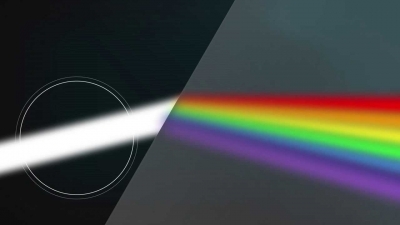
Without light there is no colour. Sunlight seems to be white light, but it is made up of seven colours: red, orange, yellow green, blue, indigo and violet. When sunlight passes through a prism it spreads out into a rainbow band of these colours, called the spectrum.
When sunlight shines through rain it is split up by the droplets into a rainbow.
And just as sunlight passing through a prism is bent, so is sunlight passing through drops of water. This produces an atmospheric solar spectrum in the sky for all to see: a rainbow.
A rainbow is simply a group of circular or nearly circular arcs of color that appear as a huge arch in the heavens. The raindrops act like miniature prisms, refracting or breaking sunlight into various colors as well as reflecting it to produce the spectrum.
Rainbows are frequently seen in the wake of a rainstorm. They come when the sunlight breaks through rain clouds.
You can create an artificial rainbow for yourself with a garden hose. Simply stand with your back to the sun and adjust the hose to a fine spray. Rainbows can also be seen against the spray of a waterfall.
A single, or primary, rainbow has red on the outside or top of the bow and blue on the inside. Usually the radius of the arc is equal to about one-fourth of the visible sky, or 42 degrees, to the red. When there are showers nearby, simply look in the part of the sky opposite the sun at a 42-degree angle from your shadow; if there is a rainbow, that is where it will be.
The primary bow is due to light that enters the upper part of the drops and leaves after one internal reflection, so this bow is always brighter than the secondary bow where sunlight is reflected twice within raindrops.
Sometimes a secondary bow forms outside the primary. It will be fainter, with the colors reversed: red on the inside, violet on the outside. The secondary rainbow forms at a 51-degree angle from your shadow; it’s always fainter and usually disappears more quickly than the primary.
The region between the two bows appears relatively dark, for it lacks entirely both the once- and the twice-reflected rays.
There is even evidence for a third or tertiary rainbow that has been seen on rare occasions, and a few observers have even reported seeing quadruple rainbows in which a dim outermost arc had a rippling and pulsating appearance.
Credit : Live Science
Picture Credit : Google




